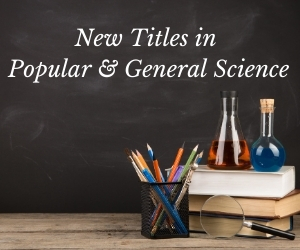System Upgrade on Tue, May 28th, 2024 at 2am (EDT)
Existing users will be able to log into the site and access content. However, E-commerce and registration of new users may not be available for up to 12 hours.For online purchase, please visit us again. Contact us at customercare@wspc.com for any enquiries.
Mathematical science communication, as well as the field of science communication in general, has gained momentum over the last few decades. Mathematical science communication aims to inform the public about contemporary research, enhance factual and methodological knowledge, and foster a greater interest and support for the science of mathematics. This enables the public to apply it to their practical life, and to decision-making on a greater scale. These objectives are met in the various formats and media through which mathematical science communication is brought to the public.
The first 13 chapters of the book consist of best-practice examples from the areas of informal math education, museums and exhibitions, and the arts. The final 5 chapters discuss the structural aspects of mathematical science communication and contribute to the basis for its theoretical framework.
Sample Chapter(s)
Foreword
Introduction
Contents:
- NRICH (Ems Lord)
- Mathematical-Artistic Activities for Social Inclusion and Well-Being: The Experience Workshop STEAM Network (Kristóf Fenyvesi, Christopher Brownell, Osmo Pekonen, Zsolt Lavicza, and Nóra Somlyódy)
- Mathematical Science Communication for Teachers (Milena Damrau)
- Math in the City: Designing a Math Trail for High School Students (Francien Bossema, Charlotte Zwetsloot, and Ionica Smeets)
- New York's National Museum of Mathematics (Glen Whitney)
- Bridging the Gap Between Math and Society (Sylvie Benzoni and Marion Liewig)
- Math Science Communication Without Words: Mathematics Adventure Land, Dresden (Rahel Brugger, Bernhard Ganter, and Andrea Hoffkamp)
- The IMAGINARY Journey to Open Mathematics Engagement: History and Current Projects (Eric Londaits, Andreas Matt, Antonia S J S Mey, Daniel Ramos, Christian Stussak, and Bianca Violet)
- Science Communication and Outreach Events During the Illustrating Mathematics Semester Program at the Institute for Computational and Experimental Research in Mathematics (ICERM) (Martin Skrodzki)
- Visualization and Social Media as Tools for Mathematics Communication: An Account of the Project "Sketchnotes of Science" (Constanza Rojas-Molina)
- Connected Curiosity (Melissa Silk and Annette Mauer)
- My Experience of Producing Mathematical Films (Ekaterina Eremenko)
- The Project Mathematics and Culture: Films on Art and Mathematics (Michele Emmer)
- Communicating Health Statistics Effectively: The Power of Icon Arrays and Natural Frequency Trees (Ines Lein and Mirjam Jenny)
- How to Develop a Concept of Smart-World Literacy: A Roadmap (Felix G Rebitschek)
- Mathematical Science Communication as a Strategy for Democratizing Algorithmic Governance (Florian Eyert)
- Articles About Mathematics, Mathematics Behind Articles (Andreas Loos)
- From Education to Edutainment in Mathematics (Thomas Vogt)
Readership: Researchers and students from all fields who are interested in the basics of communicating mathematical science and technology.





